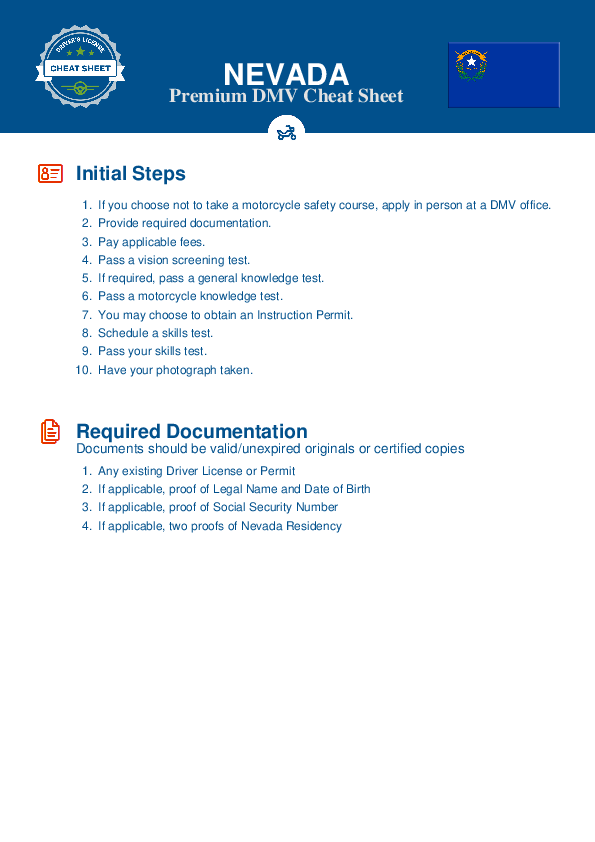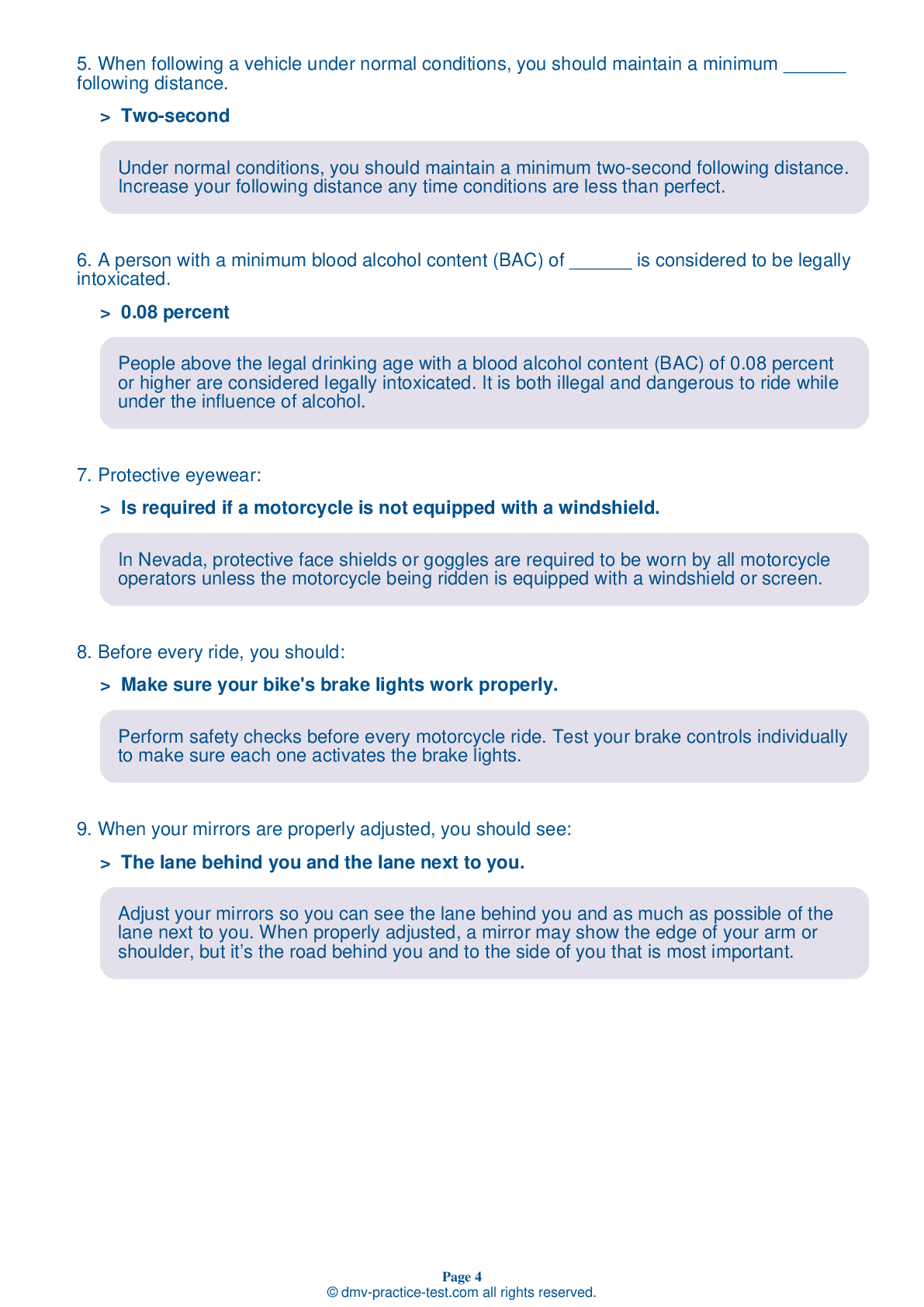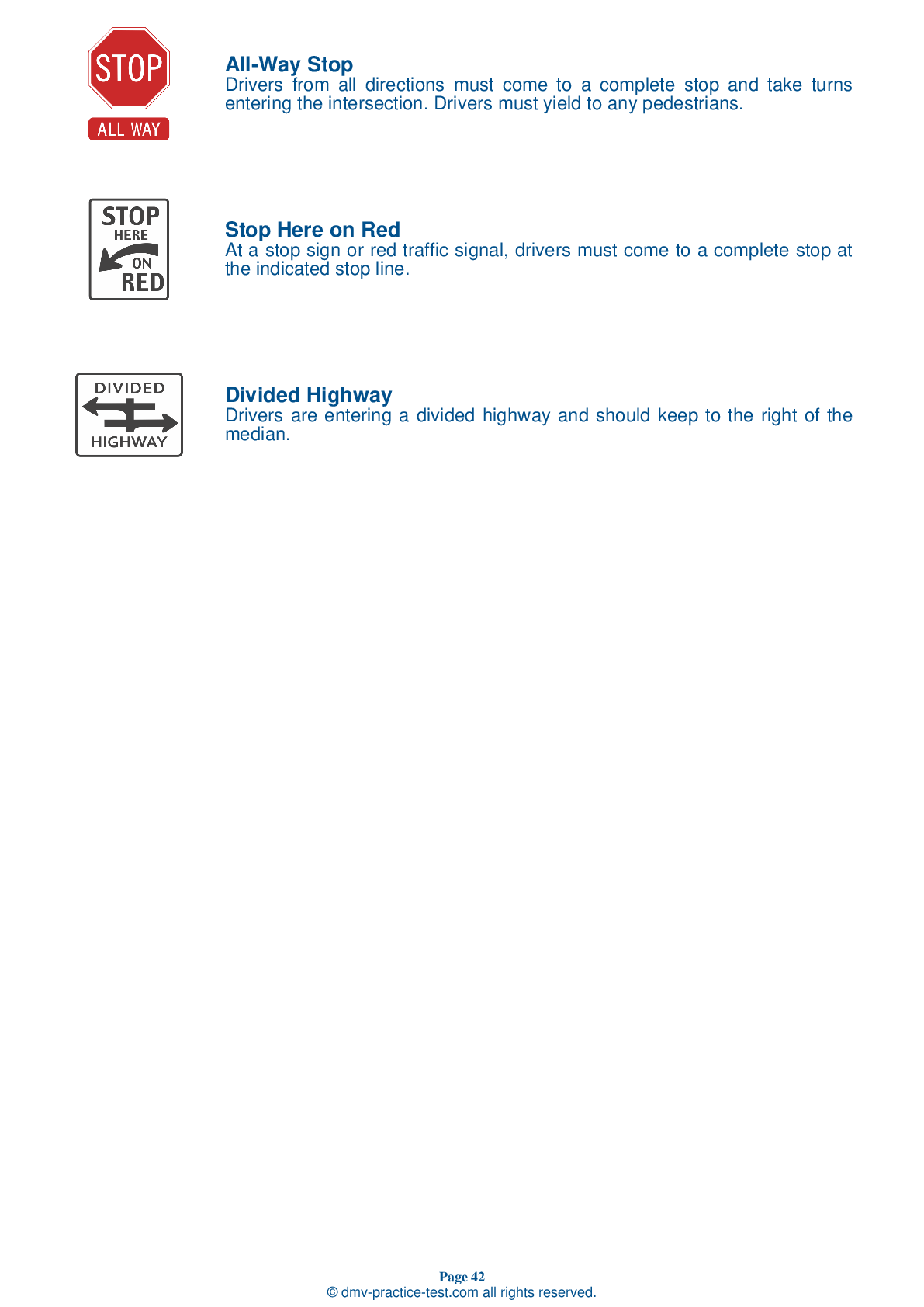Motorcycle Test | License NV 2025 | FREE Online Practice! #4 Page 4 of 4
Take this FREE motorcycle test (license in NV 2025) to check your knowledge of the road rules. To improve your results, download a motorcycle handbook online, study theory, and practice for free on our website. Still worried about how to get a motorcycle license in Nevada in 2025? Check our website for more sample tests, train as much as possible, and boost your grades!
19 . If you cannot see through the vehicle ahead of you, your following distance should be a minimum of:
An expanded cushion of space is needed if your motorcycle will take longer than normal to stop. If the pavement is slippery, if you cannot see through the vehicle ahead of you, or if traffic is heavy and another driver may try to squeeze in front of you, open up to a minimum three-second following distance.
20 . On a motorcycle, a horn:
Your horn can be a useful tool if you need to get someone's attention quickly. However, because a motorcycle's horn is not as loud as a car's, other drivers may not notice that you are sounding your horn. You should never rely only on your horn to deal with a hazard.
21 . When should a group of riders not travel in a staggered formation?
While a staggered formation is generally best for group riding, riders should switch to a single-file line when turning, taking curves, or entering or exiting a highway.
22 . Under Nevada law, a moped cannot have a displacement of more than:
Under Nevada law, a moped is defined as a motor-driven scooter or cycle with a small engine that has a displacement of no more than 50 cubic centimeters.
23 . A motorcyclist should attempt to avoid obstacles on the roadway. If avoiding an obstacle is not possible, the motorcyclist should:
If you are unable to avoid an obstacle and must instead ride over it, slow down and approach the obstacle at as close to a 90-degree angle as possible.
24 . Before every ride, you should:
Check your brake levers individually before every ride. Make sure each one feels firm and holds the motorcycle when the brake is fully applied.
25 . When riding in a group, it is best to put inexperienced riders near the front because:
In a group, less experienced riders should ride toward the front, just behind the leader, so more experienced riders can easily watch them.
See the exact questions that will be on the 2025 Nevada DMV exam.
99.2% of people who use the cheat sheet pass the FIRST TIME
Jeneen was tired of paying $5/gallon. She got herself a scooter that required the motorcycle license. She studyed the motorcycle test cheat sheet and passed her test the next day!
Christopher tells us how he knew nothing prior to obtaining the motorcycle study guide, and he only got one question wrong because he clicked on the wrong answer by mistake.



